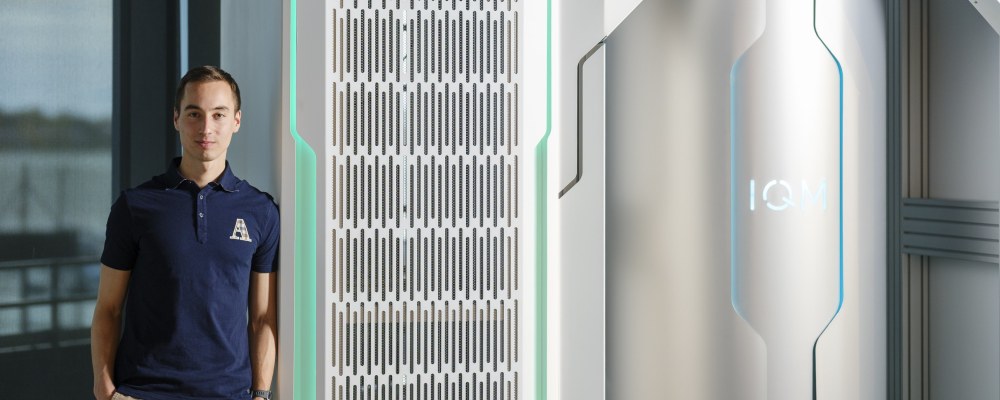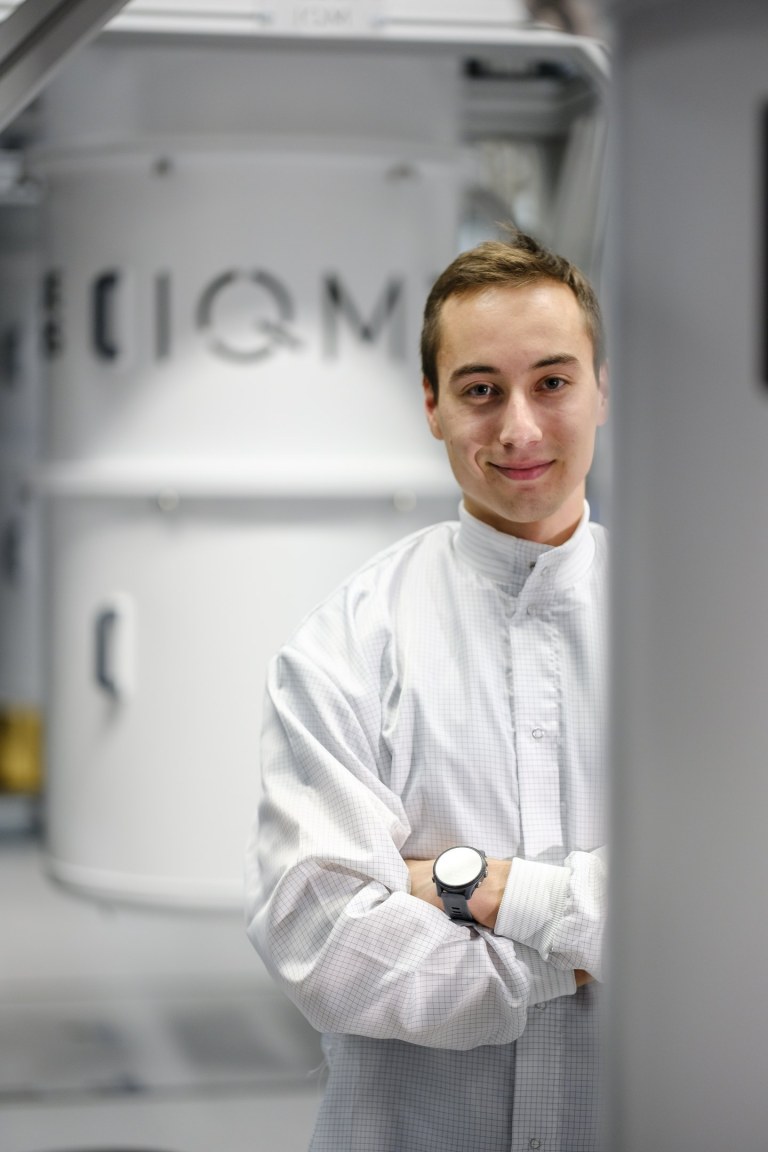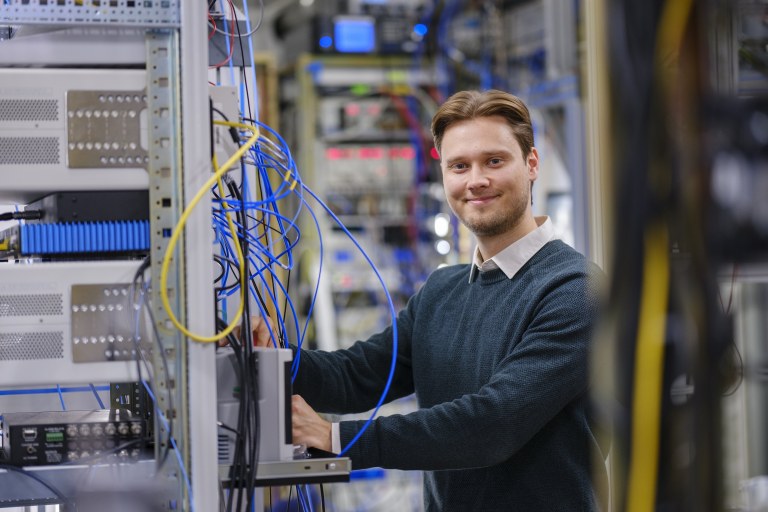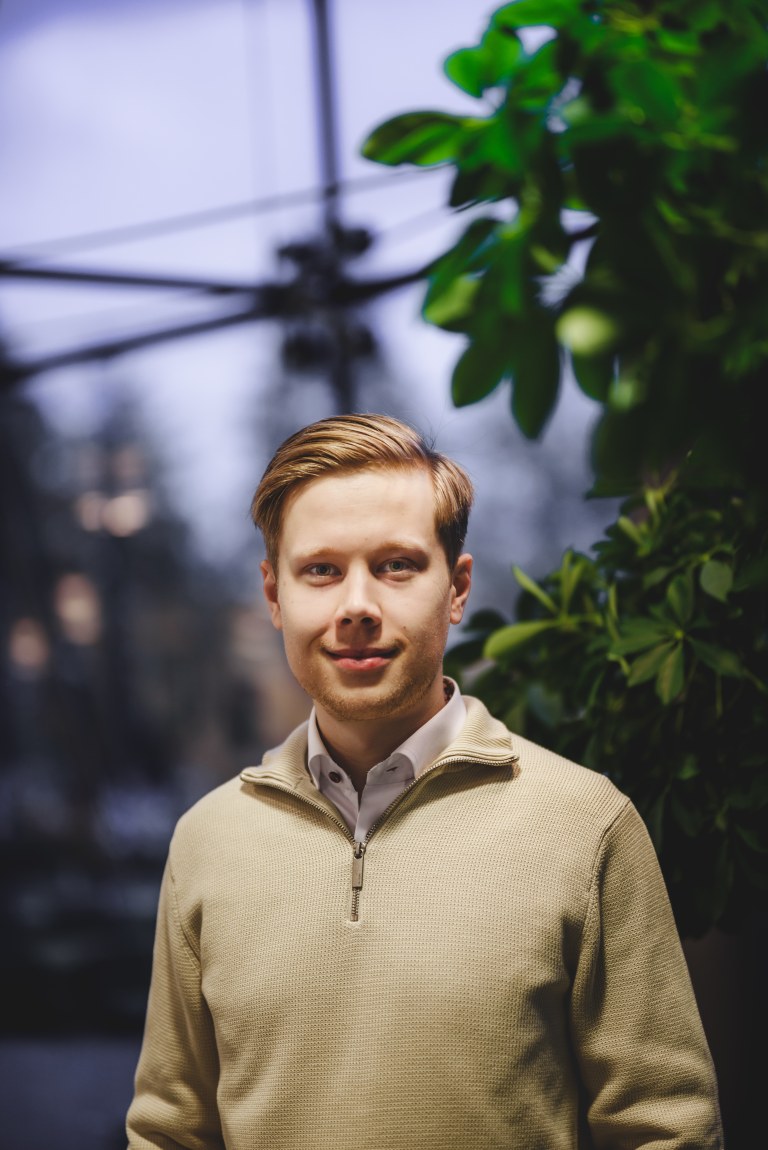
The best doctoral thesis of the year in technology is Eric Hyyppä's research defended at Aalto University, which will help to make quantum computing even more accurate and faster. The award is worth €7,500.
The best master’s thesis (diplomityö) of the year is Tuomas Uusnäkki’s research at Aalto University, which promotes energy-efficient heat management of superconducting quantum circuits. The award is worth €5,000.
The best master’s thesis (pro gradu) of the year in mathematics, physics or computer science is Miika Manu’s research at the University of Jyväskylä, which can be utilised, for example, in medical imaging. The award is worth €5,000.
The awards are presented in Helsinki today, 12 November 2025, by the Academic Engineers and Architects in Finland TEK, Tekniska Föreningen i Finland TFiF and the Academic Association for Mathematics and Natural Sciences MAL.
Read more about the winning theses below.
Doctoral thesis award: Eric Hyyppä

The doctoral thesis award goes to Eric Hyyppä, DSc (Tech), who did his research at IQM Quantum Computers and defended his doctoral thesis at Aalto University School of Science, Department of Applied Physics.
The title of his doctoral thesis is “High-fidelity elementary operations for superconducting quantum computers”. The supervising professor of the thesis was Professor Mikko Möttönen at Aalto University and the thesis advisers were Johannes Heinsoo and Brian Tarasinski at IQM.
In theory, quantum computers can solve certain computational problems much more efficiently than classical computers.
“Even though quantum computers have already gone from science fiction to reality, the elementary operations of current quantum computers are still too error prone to outperform classical computers in tasks of practical relevance,” Hyyppä says.
That is why the goal of his doctoral thesis was to improve the fidelity and speed of elementary operations in superconducting quantum computers. Superconductivity is a phenomenon in which a metal or other electrically conductive material conducts electricity without resistance when cooled.
Hyyppä pursued his goal by researching new superconducting circuit components and more precise methods for optimising the control signals of quantum bits, or qubits.
“The most important results of my thesis include the development of a new superconducting unimon qubit and novel analytical pulse shapes for implementing fast qubit control.”
Hyyppä's unimon qubit is protected against low-frequency charge noise. In other words, unimon reduces the effect of noise. In addition, the unimon supports faster logic operations compared to the most commonly used transmon qubit. Hyyppä says that, in turn, the pulse shapes he developed enabled record-low leakage errors of fast single-qubit logic operations.
The results of Hyyppä's work help to make quantum computing more accurate. The TEK Technology Committee, which acts as the award jury, considers the work to be a significant breakthrough in the basic technology of superconducting quantum computers.
“If quantum computers achieve sufficient computational accuracy, they have the potential to significantly enhance the efficiency of, for example, material and molecular system simulations and the solution of certain optimisation problems,” Hyyppä says.
Hyyppä's research results have been quickly adopted by both the scientific community and industry.
Hyyppä is currently working at IQM on further developing the methods in his thesis to make them suitable for larger quantum computers. The aim is also to help commercialise the methods to allow users of IQM's quantum computers to benefit from more accurate quantum computing.
In addition to IQM, Hyyppä works part-time as a senior research scientist at the Finnish Geospatial Research Institute FGI, where he studies the application of mobile laser scanning to measure forests.
Master’s thesis award: Tuomas Uusnäkki

The award for best master’s thesis (diplomityö) of the year goes to Tuomas Uusnäkki, MSc (Tech), who did his thesis at Aalto University School of Science.
The title of Uusnäkki’s thesis is “Quantum Heat Engine Based on Superconducting Circuits”. The thesis supervisor was Professor Mikko Möttönen at Aalto University and the project supervisor was Timm Mörstedt.
In his thesis, Uusnäkki studied and experimentally demonstrated the operation of a quantum heat engine using a sample made of superconducting circuits in a low-temperature environment. The machine's medium was a superconducting transmon qubit. According to Uusnäkki, modern quantum computers are currently based on transmon qubits.
Uusnäkki says that his research was the first experimental demonstration of a quantum heat engine based on superconducting quantum circuits. According to the award jury, the results of the thesis have, in addition to academic value, the potential to pave the way for future practical applications, such as energy-efficient heat management of quantum systems.
“The thesis advanced the control of heat environments in quantum circuits and potentially created a way to utilise the waste heat radiated from quantum computer circuits,” Uusnäkki sums up.
“Heat environments and their control will be critical in future quantum computers, as controlling large numbers of qubits creates significant thermal noise in the system. Although the practical benefits of the quantum heat engine cannot be directly seen in everyday life, it is part of a major effort towards working quantum computers, which have significant potential to impact people's lives,” he says.
Uusnäkki continues working on these topics as a doctoral researcher.
Master’s thesis award: Miika Manu

The award for the best master’s thesis (pro-gradu) of the year in mathematics, physics or computer science goes to Miika Manu, MSc, who did his research at the Department of Mathematics and Statistics, University of Jyväskylä.
Manu's thesis is titled "Injectivity of the geodesic ray transform and the light ray transform". The thesis was supervised by Joonas Ilmavirta, assistant professor at the University of Jyväskylä.
Can function f be uniquely determined if the integrals of function f over all lines are known? Manu studied two versions of this question and used the ray transform operator to examine the question. It transforms function f into an integral over a given line. According to Manu, function f can then be uniquely determined exactly when the ray transform operator is injective. That is, for example, the original function can be restored without erasing information.
According to the award jury, Manu’s topic is very challenging for a master’s thesis.
“Ray transforms can be utilised, for example, in medical imaging,” Manu says.
In X-ray imaging, X-rays consisting of high-energy photons are sent through the object to be imaged. The intensity of the ray decreases as it passes through the object, as the object absorbs the photons. Since different materials absorb photons differently, the change in intensity depends on the composition of the object, Manu explains.
“By measuring changes in intensity, you can try to determine the composition of the object,” Manu says.
He explains that mathematically, the composition of an object and its ability to absorb photons can be described by function f. In this case, measuring the change in intensity corresponds to the integral of function f over the line the ray travels, so X-ray imaging can be modelled using the ray transform described above.
Manu continues on the path indicated by his master's thesis as a doctoral researcher. He studies, for example, geodesic ray transform in non-smooth geometry.
Solutions that improve the world
TEK and TFiF present an annual award for the best doctoral thesis and master’s thesis in engineering or architecture. In addition, MAL presents an annual award for a master’s thesis in mathematics, physics or computer science.
“Broad-based skills are important when using technology to create solutions to major societal problems and when technology is being deployed. Such skills provide the ability to understand impacts across disciplines and to create solutions that improve the world,” says Mikko Särelä, Expert for Industrial and Innovation Policy at TEK.
“Continuing education in technology provides the skills to identify socially and industrially significant problems and to develop solutions that can be put into practice. A thesis also teaches how to lead demanding technology development projects and to take ideas from the research desk and transform them into practical applications,” says Annika Nylander, CEO at TFiF.